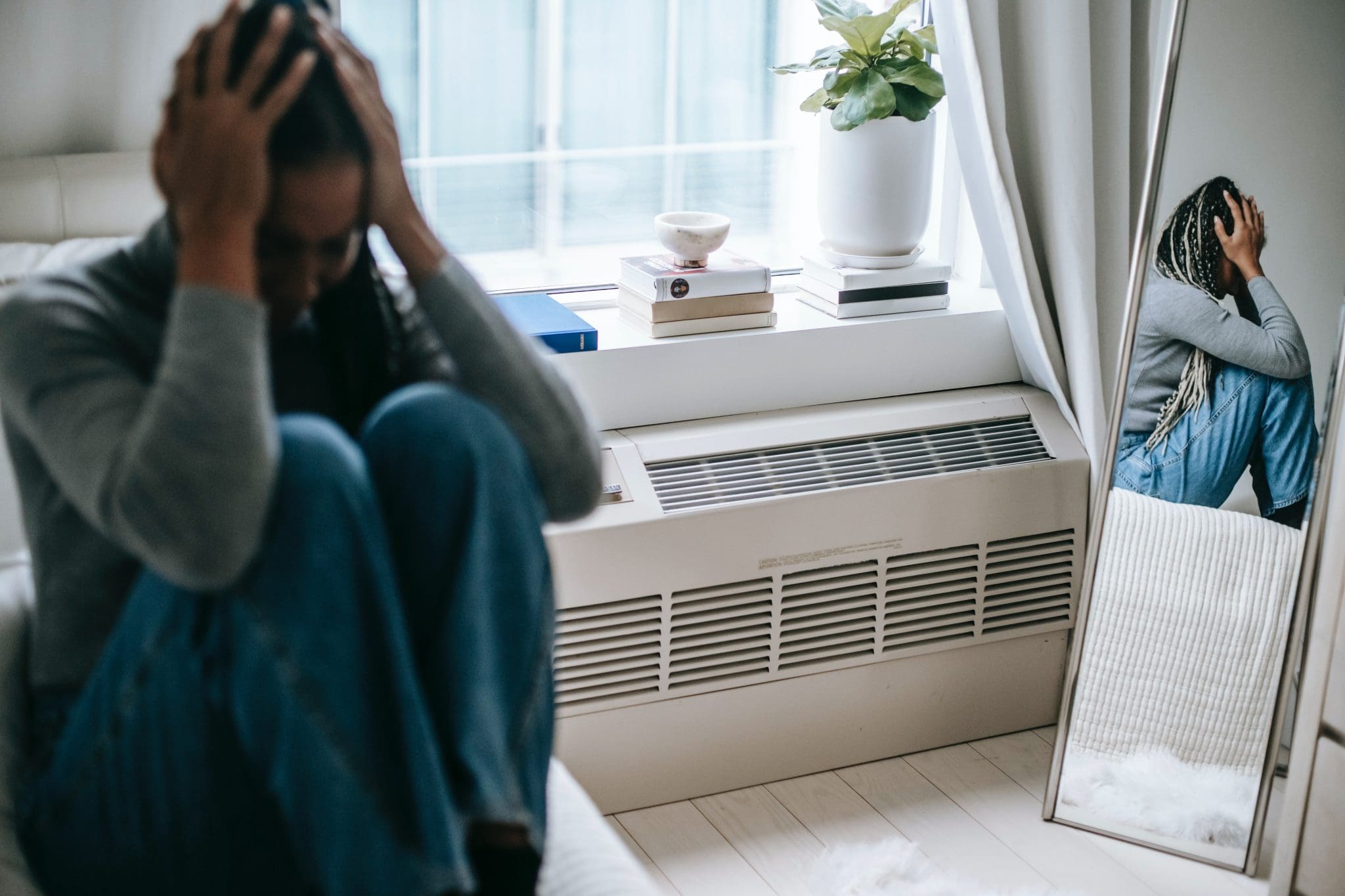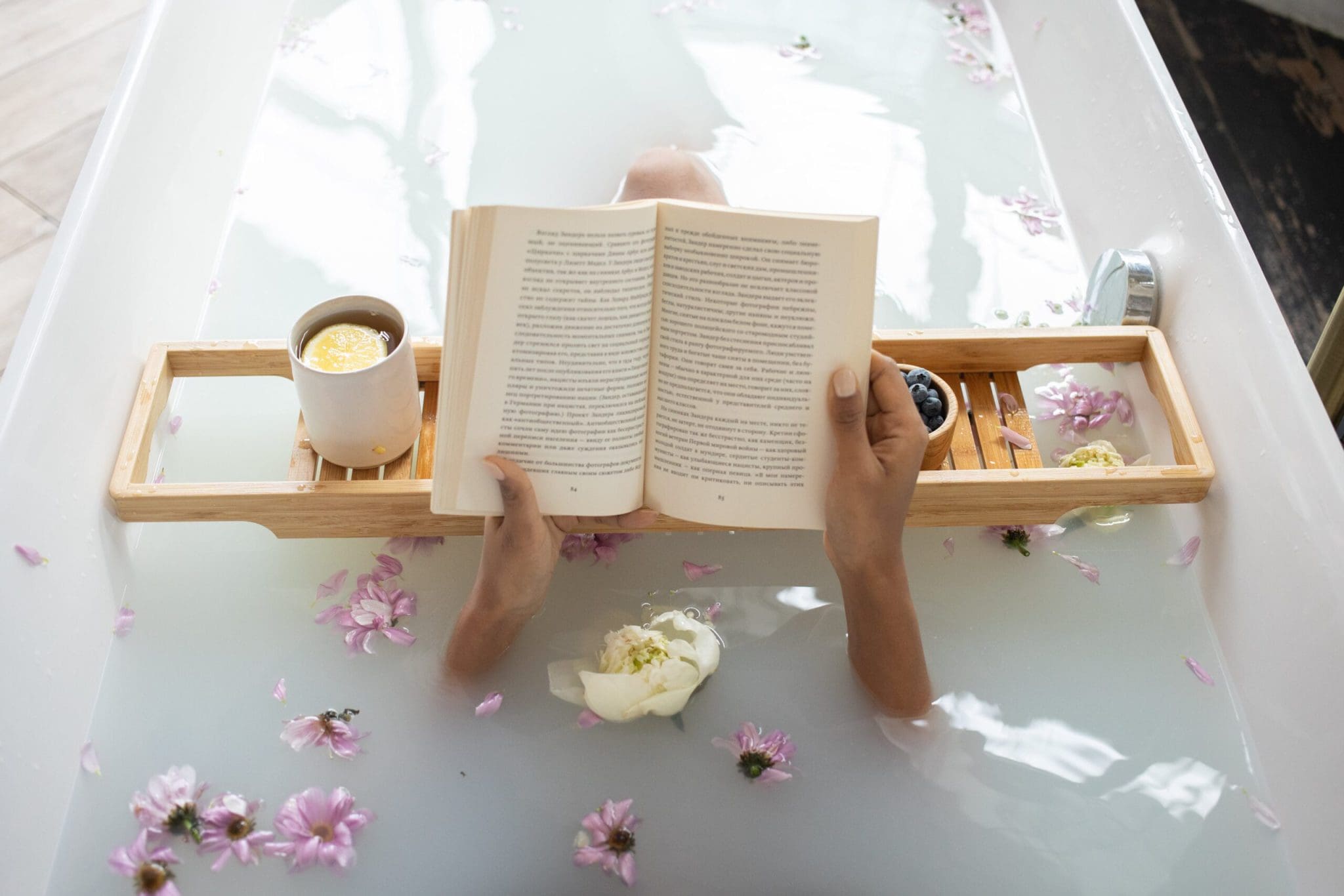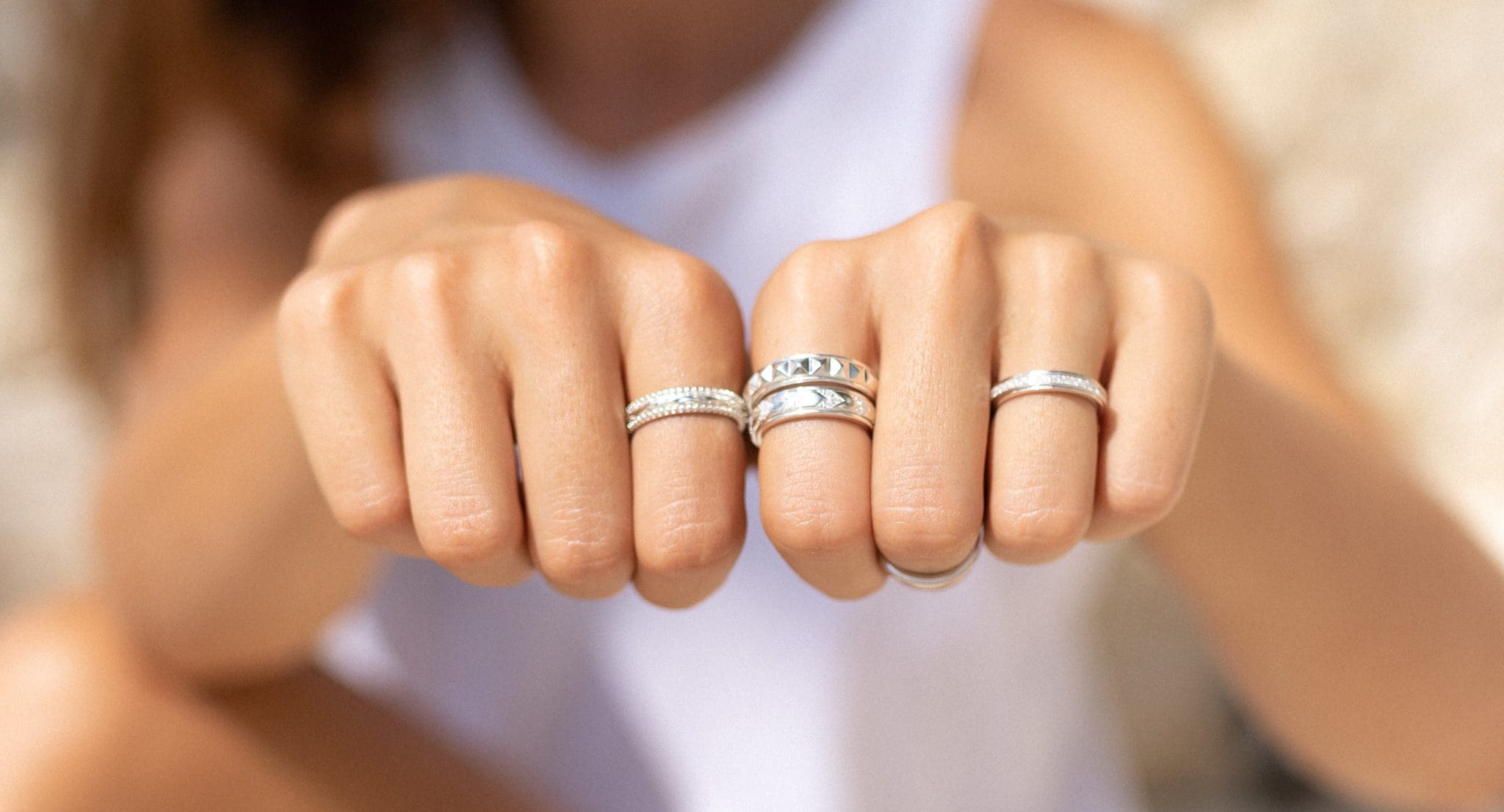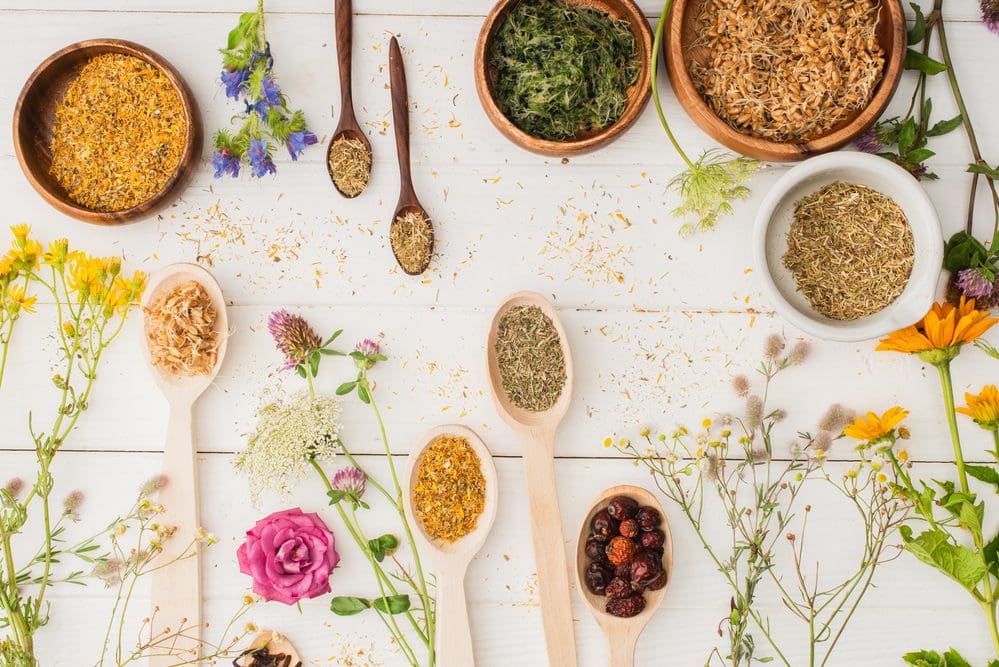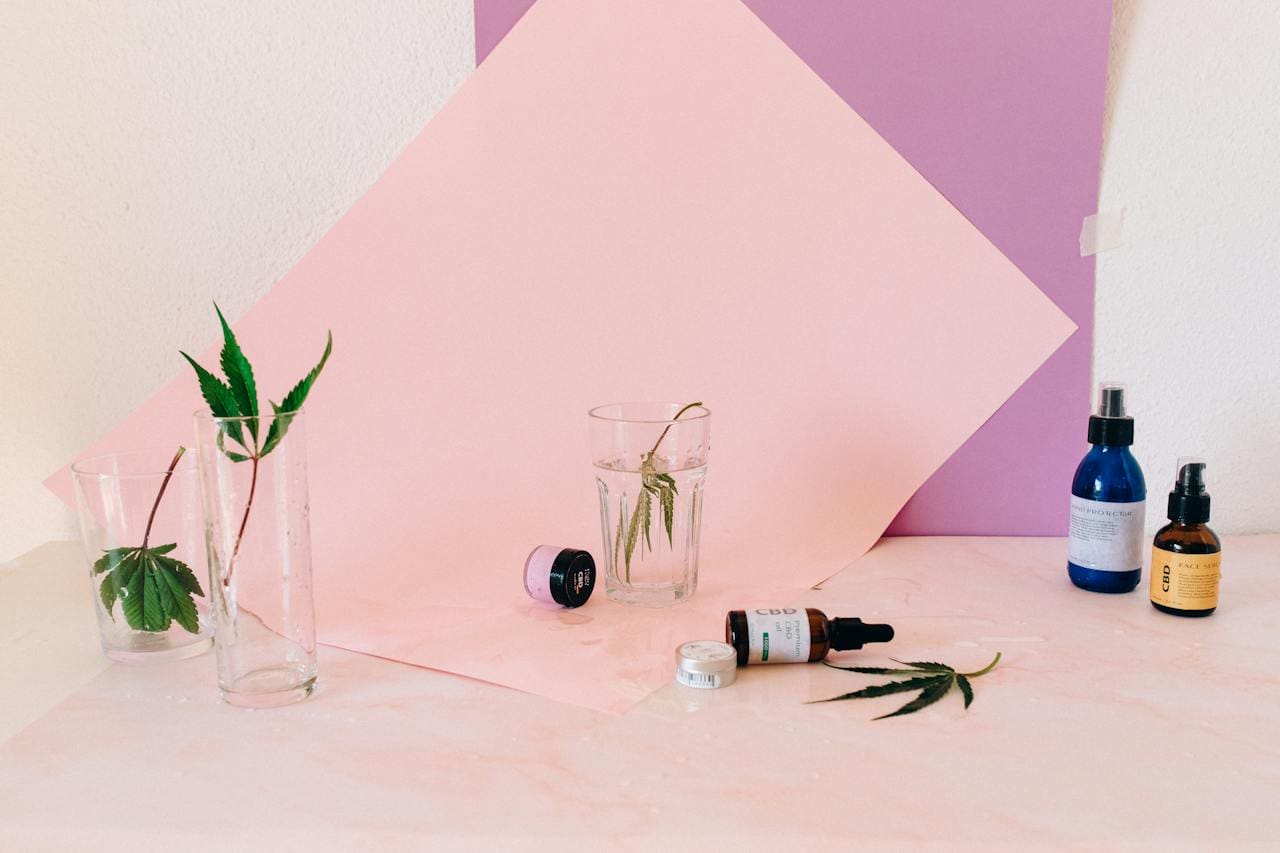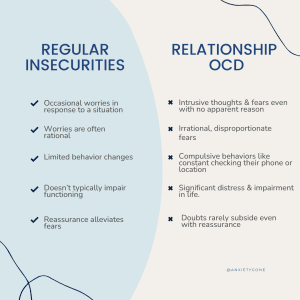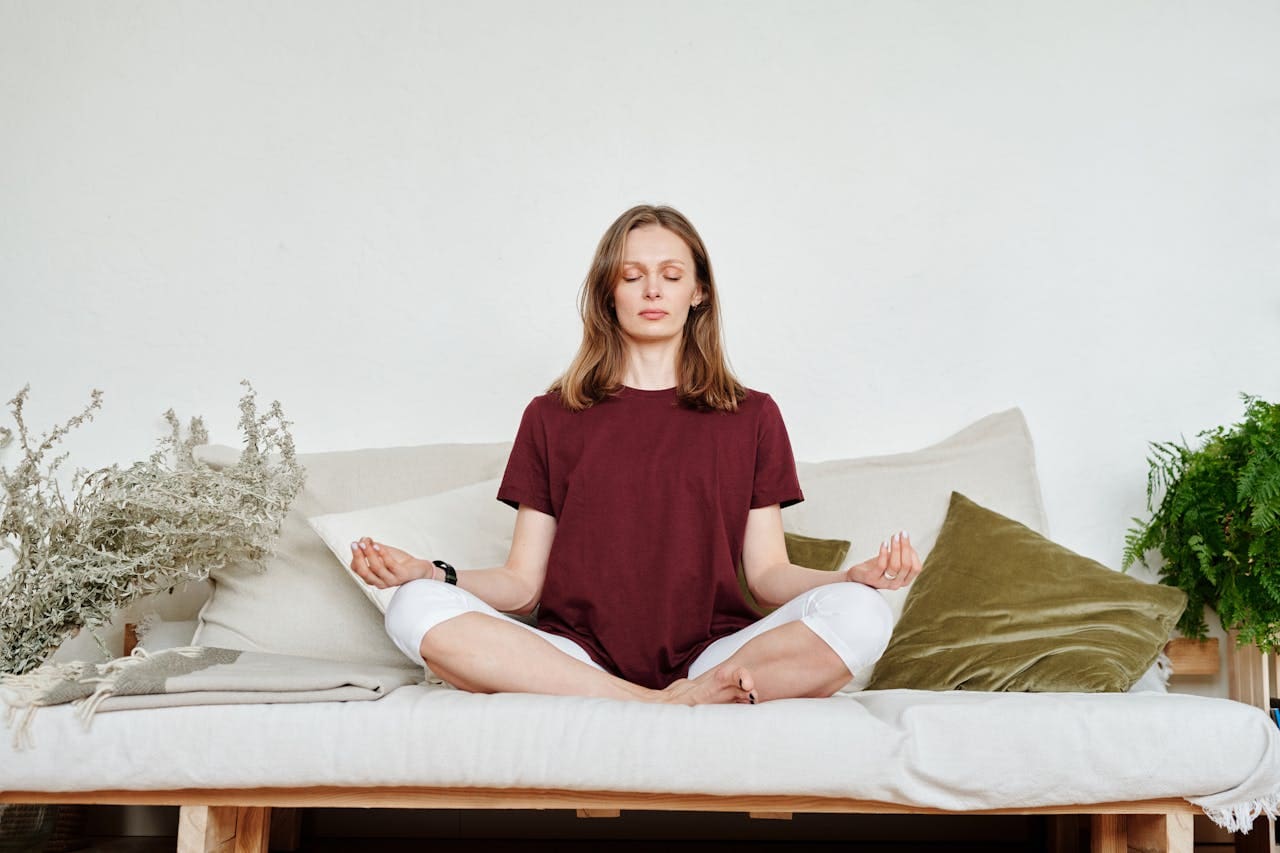Full Disclosure: Clicking on these links could mean a tiny commission for me, at no extra cost to you.
When a partner has Obsessive Compulsive Disorder, it can pose unique challenges in a relationship. Although there isn’t a ‘perfect’ guide for individuals and couples to navigate OCD and relationships, there are practical tips to help you control your thoughts and emotions or support a partner with relationship OCD.
Understanding OCD and Relationships
In OCD, the brain continuously throws intrusive thoughts that interfere with daily functioning. For people with relationship OCD, these negative ruminating thoughts often pertain to their relationships and/or partner. There is increasing research that shows that these intrusive thoughts can also show up in romantic attachments as Relationship OCD or R-OCD 1.
While doubts about compatibility and having opposing feelings in a relationship are often a natural part of a developing romantic relationship, ROCD kicks things up a notch. The doubts and worries can be so loud that they often start to impair the relationship and eventually, distance you from your partner.
In Thriving In Relationships When You Have OCD, Dr. Amy Mariaskin dives into the common difficulties faced by clients living with OCD. It is a self-help book that can provide skills and tools that are derived from various therapeutic modalities to help individuals with OCD and relationships.
advertisement
Start managing OCD today
Relationship OCD is treatable with therapy, and
BetterHelp offers a convenient and affordable solution. With over 20,000 licensed therapists available, BetterHelp provides accessible care, starting at just $65 per week. Take a free online assessment today to get matched with the right therapist for you.
The Impact of OCD and Relationships
R-OCD combines the difficulties associated with OCD symptoms and the complexities of a relationship. While the partner with OCD experiences distress due to persistent intrusive thoughts and compulsive behaviors, the partner without OCD can feel confused and helpless. The dynamic of OCD and relationships can present unique challenges for partners.
Here are some other ways relationship obsessive compulsive disorder can impact your romantic relationships:
- Increased Stress and Anxiety: OCD can heighten stress and anxiety levels for both partners, leading to frequent tension and misunderstandings.
- Communication Barriers: Obsessive thoughts and compulsive behaviors can make open and honest communication more challenging, causing frustration and miscommunication.
- Emotional Distance: The non-OCD partner might feel emotionally neglected or distant due to the OCD partner’s preoccupations and rituals.
- Role Strain: The non-OCD partner may take on additional responsibilities or caregiving roles, leading to imbalance and resentment over time.
- Social Isolation: Couples may withdraw from social activities to avoid triggers or due to embarrassment, resulting in feelings of isolation and loneliness.
- Intimacy Issues: OCD can affect physical and emotional intimacy, creating barriers to a fulfilling romantic connection.
- Financial Strain: The cost of treatment and therapy for OCD, along with potential job loss or reduced work hours, can place financial stress on the relationship.
- Time Consumption: Compulsions and rituals can consume a significant amount of time, leaving little room for shared activities and quality time together.
- Impact on Children: If the couple has children, OCD can affect parenting styles and the emotional well-being of the entire family.
- Resentment and Frustration: Persistent OCD symptoms can lead to resentment and frustration for both partners, potentially straining the relationship to its breaking point.
Practical Tips for Couples Navigating OCD and Relationships
Navigating OCD within a relationship can be challenging, but with the right strategies, couples can strengthen their bond and manage the disorder more effectively. By focusing on clear communication, mutual support, and understanding, partners can overcome the obstacles OCD presents. Here are some practical tips to help couples thrive despite the challenges of relationship OCD.
1. Keep learning
One of the core elements of recovery is education about relationship obsessive compulsive disorder. As you learn more and understand more, chances are that you will become less judgmental of the condition.
When you are in the mood for some reading, you can look up books by mental health professionals who specialize in working with OCD. One suggested reading is When a Family Member Has OCD: Mindfulness and Cognitive Behavioral Skills to Help Families Affected by Obsessive-Compulsive Disorder, by Jon Hershfield and Jeff Bell.
2. Try OCD coping strategies
Navigating OCD within a relationship can be challenging, and there’s no one-size-fits-all solution. Each couple may need to explore and experiment with different techniques to find what works best for them. One effective strategy is the I AM method, which stands for:
Identify
: The first step is to identify the feeling, thought, or doubt, and label it. This helps the partner with OCD separate themselves from the symptoms, recognizing that these intrusive thoughts are part of the disorder and not a reflection of their true self.
Allow
: Instead of pushing away the urges and thoughts, which can often increase their power, try allowing them to exist. Allowing doesn’t mean you approve of the urges; it simply means you are making space for them. This approach can reduce the anxiety associated with fighting against these thoughts and help to diminish their impact over time.
Moment
: Shift your attention to the present moment. Engage in activities or actions that both partners can do together to stay grounded and connected. Whether it’s taking a walk, cooking a meal, or simply talking, focusing on the present can help reduce the intensity of OCD symptoms and strengthen the relationship.
By incorporating the I AM method and other practical strategies, couples can create a supportive and understanding environment that fosters mutual growth and resilience in the face of OCD challenges.
3. Identify your values
One effective form of therapy, called Acceptance and Commitment Therapy (ACT), can help you clarify and identify your core values. Understanding these values is crucial for building a relationship that aligns with what truly matters to both partners, beyond the challenges posed by relationship OCD.
Reflect on these questions to gain clarity:
- What would my relationship look like if it were fully in line with my values?
- How does relationship OCD prevent that from happening?
Taking the time to answer these prompts can provide insight into how OCD interferes with your relationship goals and values. Once you have a clear understanding of your values, you can start making changes that reflect them.
After identifying your values, consider small, actionable steps you can take to align your relationship with these values. The good news is that you don’t have to make major changes all at once. Here are some tips to get started:
- Set Small Goals: Break down your values into manageable actions. For example, if one of your values is spending quality time together, you might start by setting aside 10 minutes each day for undistracted conversation.
- Communicate Openly: Share your values and goals with your partner. Open communication helps both partners understand each other’s priorities and work together to support them.
- Celebrate Progress: Recognize and celebrate small victories. Every step towards living in accordance with your values is a positive move, no matter how small it may seem.
- Stay Committed: Commitment to your values involves continuous effort. Revisit your values regularly and adjust your actions as needed to stay aligned with them.
By focusing on your values and taking small, consistent steps towards them, you can create a more fulfilling and resilient relationship, even in the face of OCD challenges.
advertisement
Access Anxiety Treatment Right Now
→ Online Therapy – Speak with a licensed therapist today. Teen Counseling offers online therapy starting at $65 per week. Free Assessment
→ Digital Psychiatry – Try FDA-Approved Medication Prescribed by your Dedicated Brightside Team and Delivered to your Door for $45 your First Month. Get Started
4. Practice exposure in daily life
One of the gold standard treatments for OCD is Exposure and Response Prevention (ERP). While it’s always best to work with a therapist, you can also try incorporating exposures into your everyday life. Exposure doesn’t have to be complicated, but remember, the key is to respond in a way that gives you more control over your thoughts and emotions. Here are some practical ways to practice exposure on your own:
- Engage in Avoided Activities: Choose an activity you typically avoid due to your relationships and OCD fears. For example, if you avoid meeting friends who you perceive to have a “perfect” relationship, challenge yourself to meet them once a month. This helps you face your fears and see that the outcomes are often less severe than anticipated.
- Record Triggering Words or Phrases: Write down words or phrases that trigger your OCD. Regularly read or listen to these recordings until the anxiety they cause decreases.
- Repeat Trigger Words: Write or say your trigger words repeatedly until they lose their meaning or their intensity diminishes. This technique, called “semantic satiation,” can help desensitize you to the triggers.
- Watch Movies or Shows: Watch movies or shows with your partner that involve your fears. Discussing these fears openly with your partner while watching can help reduce the anxiety associated with them.
- Worst-Case Scenario Writing: Write down a worst-case scenario using a prompt, such as “If I end up alone…” This can help you confront and process your fears, often revealing that the worst-case scenarios are manageable or unlikely.
By incorporating these exposures into your daily life, you can gradually reduce the power of OCD over your thoughts and behaviors. Remember, the goal is to face your fears in a controlled way, helping you to regain control and live more freely.
5. Practice self-care
Dealing with a mental health condition like OCD can be exhausting for both partners. While the partner with relationship OCD battles their obsessions and compulsions, the non-OCD partner may struggle with feelings of inadequacy or frustration. This emotional toll makes self-care a vital component of the recovery journey for both individuals.
While mutual support and connection are crucial, it’s equally important for each partner to prioritize their own well-being. Regular emotional check-ins and open dialogue can strengthen your bond and help both partners feel heard and understood.
Setting aside time for self care, whether it be a Self Care Sunday or another time in the week, can be an excellent coping strategy for managing the complexities of OCD and relationships. Incorporate self-care activities into your daily routine to maintain your mental and emotional health. Here are some self-care tips:
- Physical Activity: Engage in regular exercise, such as walking, yoga, or gym workouts. Physical activity can reduce stress and improve your mood.
- Mindfulness and Meditation: Practice mindfulness or meditation to help manage anxiety and stay grounded. Even a few minutes a day can make a significant difference.
- Hobbies and Interests: Dedicate time to activities you enjoy. Whether it’s reading, painting, or gardening, engaging in hobbies can provide a much-needed mental break.
- Rest and Relaxation: Ensure you get adequate rest. Prioritize sleep and take breaks when needed to recharge your energy.
- Healthy Eating: Maintain a balanced diet to support your overall well-being. Healthy eating can positively impact your mood and energy levels.
6. Set Healthy Boundaries
When navigating OCD and relationships, it’s important to set healthy boundaries. While it may sometimes feel counterintuitive to set limits with your romantic partner, boundaries are essential in all aspects of life. Yes, even your relationships.
Here are some examples of boundaries for relationship OCD:
Limit Reassurance-Seeking:
- Boundary: “I will not repeatedly reassure you about our relationship status.”
- Example: Instead of constantly affirming love or commitment when asked multiple times, gently remind your partner about the boundary and encourage them to use coping techniques.
Designate Worry-Free Times:
- Boundary: “We will have specific times when we do not discuss OCD-related worries.”
- Example: Designate evenings or weekends as OCD-free times where you focus on enjoying each other’s company without discussing OCD concerns.
Separate OCD from Relationship Issues:
- Boundary: “We will differentiate between genuine relationship issues and OCD-driven doubts.”
- Example: Agree to address relationship concerns during calm moments, not in the heat of OCD-induced anxiety.
Maintain Personal Space:
- Boundary: “We each need personal time and space to recharge without feeling guilty.”
- Example: Set aside alone time for activities like reading, exercising, or hobbies without interruptions or guilt.
Encourage Professional Help:
- Boundary: “We will seek professional guidance for OCD management rather than relying solely on each other.”
- Example: Agree that therapy sessions and professional advice are primary sources of support for OCD, reducing dependency on each other for constant reassurance.
Limit Checking Behaviors:
- Boundary: “I will not participate in compulsive checking behaviors.”
- Example: If your partner frequently asks you to check or verify things, kindly remind them of this boundary and encourage alternative coping strategies.
Respect Emotional Boundaries:
- Boundary: “We will respect each other’s need for emotional space during high-anxiety periods.”
- Example: If one partner feels overwhelmed, they can take a break to manage their emotions without feeling pressured to engage immediately.
Avoid Engaging in Rituals:
- Boundary: “I will not engage in or support OCD rituals.”
- Example: If your partner has a ritual that involves you, like needing you to say certain phrases, gently decline and encourage them to use therapeutic techniques instead.
Encourage Independence:
- Boundary: “We will both work on developing independence and self-reliance.”
- Example: Encourage your partner to engage in self-help practices and build resilience, reducing reliance on you for constant support.
By setting boundaries, couples can create a healthier dynamic that supports both partners’ well-being and promotes a more balanced relationship.
7. Celebrate your achievements
According to The International OCD Foundation, the efforts made by an individual with relationship OCD often go unnoticed because they might seem minor to the partner without OCD 2. For example, when the person with OCD resists the urge to ask for reassurance, it can be a significant victory for them. Acknowledging and celebrating these small achievements can be incredibly motivating and reinforce positive behaviors.
How to Recognize Achievements:
- Verbal Praise: Offer specific and sincere compliments. For example, “I noticed you didn’t ask for reassurance today. That’s a big step forward, and I’m really proud of you.”
- Celebrate Milestones: Mark significant milestones with small celebrations. This could be as simple as a special dinner, a heartfelt note, or a favorite activity together.
- Positive Reinforcement: Reinforce positive behavior with immediate positive feedback. Let them know you see and appreciate their efforts as soon as they happen.
- Keep a Progress Journal: Suggest keeping a journal to track achievements and progress. Writing down these moments can provide a tangible reminder of how far they’ve come.
- Create a Reward System: Set up a reward system for meeting certain goals. This could be earning points towards a special treat or activity they enjoy.
- Encourage Self-Praise: Encourage your partner to acknowledge their own achievements. Self-recognition can be empowering and help build internal motivation.
Examples of Recognizing Achievements:
- Resisting Compulsions: When your partner successfully resists a compulsion, acknowledge their effort. For instance, “I saw you resisted checking the door multiple times. That’s fantastic progress!”
- Facing Fears: If they confront a fear or trigger, praise their bravery. “I’m really impressed by how you faced that situation today. You handled it so well.”
- Using Coping Strategies: When they use a coping strategy effectively, let them know you noticed. “I noticed you used your breathing exercises when you felt anxious. That’s a great technique, and I’m proud of you for using it.”
Closing Thoughts
Living with OCD can often feel isolating, even within the context of a loving relationship. However, by implementing practical tips and strategies, you can work towards building a healthier, more resilient relationship. Remember, OCD does not define your relationship; instead, it presents an opportunity for growth and deeper understanding between partners.
Through mutual support, open communication, and a commitment to each other’s well-being, you can transform the challenges of relationship OCD into a pathway for strengthening your bond. Celebrate each small victory, set healthy boundaries, and prioritize self-care for both you and your partner. By doing so, you can create a nurturing and supportive environment where love and connection thrive, regardless of the obstacles that OCD and relationships may present. Together, you can turn these challenges into opportunities to improve your relationship, fostering a partnership that is both compassionate and enduring.
Additional Resources
Ready to elevate your mental wellness? To help our readers thrive along their mental health journey, Anxiety Gone partners with leading experts in mental health and wellness field. Anxiety Gone may receive commission from the companies listed below at no extra cost to you.
Talk Therapy
Better Help offers access to over 20,000 licensed therapists available, starting at just $65 per week. Take a free online assessment today to get matched with the right therapist for you. Get Started
Virtual Psychiatry
Brightside Therapy offers anxiety and depression treatment online from licensed psychiatric providers and therapists. No need to wait, start a free consultation online today. Get Started
Mental Health Newsletter
Join our free Anxiety Gone newsletter and receive helpful tips and expert advice delivered right to your inbox. Sign Up
Tap Into Relief
Tapping (EFT) combines acupressure and psychology to reduce stress and anxiety. Tap on meridian points while focusing on thoughts to calm your mind and improve well-being. Access guided sessions, meditations, and resources to integrate tapping into your daily life.
Start your journey to a balanced life today! Get Started
Mindfulness Plus
Unlock over 2,000 mindfulness practices created by experts within the mindfulness and meditation field, with daily practices designed to meet your unique needs and aspirations, this serves as your daily companion toward a more mindful existence. Get Started
Mental Health Support
Access our list of mental health support lines and crisis hotlines and receive immediate access to professionals trained to help. Find a Helpline
Relationship OCD Infographics
References:- Mısırlı, M., & Kaynak, G. K. (2023). Relationship obsessive compulsive disorder: A systematic review. Psikiyatride Güncel Yaklaşımlar, 15(4), 549-561.
- International OCD Foundation | Living With Someone Who Has OCD. Guidelines for Family Members. (2010). International OCD Foundation. https://iocdf.org/expert-opinions/expert-opinion-family-guidelines/



